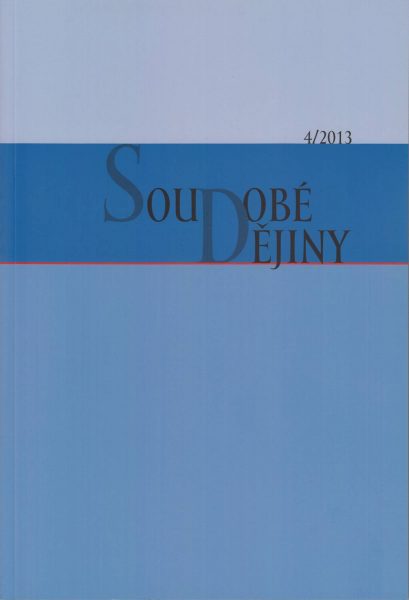Jiné války. Valečné konflikty 20. století v moderním anglosaském komiksu
Different Wars: Twentieth-century Wars in Modern English-language Comics
Author(s): Dalibor VáchaSubject(s): Literary Texts
Published by: AV ČR - Akademie věd České republiky - Ústav pro soudobé dějiny
Summary/Abstract: This article considers the image of twentieth-century wars, particularly the Second World War, in comics, mainly American, published in the last twenty years. In the first part of the article, the author seeks to show in outline how the genre of comics is perceived by scholars of literature, and is sometimes used by historians. At first sight it may appear that this distinct area of visual literary art has for the most part been dealt with by scholars. Nevertheless, upon closer analysis it turns out that the opposite is true. In the next part of the article, the author briefly discusses comic-book heroes who were ‘born’ during the Second World War, both on the pages of magazines from the 1940s (Captain America) or after the war (Magneto of the X-Men series). The main parts of the article first discuss comics whose artists have tried to depict the conflicts of war in a more or less ‘documentary’ way while depicting everyday life of those times. Besides them, the author distinguishes a group of comics whose conception is between ‘reality’ and fantasy. The most usual and most numerous, however, are comic-book stories in which the overall framework and events, especially of the Second World War and the fight against Nazism, serves only as the historical backdrop for the projection of fantasy subject matter. This category includes the famous Hellboy and various stories about attacks by zombies or vampires in this period. With their work, the outstanding comic-book artists Garth Ennis and Mike Mignola have covered both areas of wartime comics. In the last part of the article, the author discusses other media, especially fi lm and computer games, in which wars are conceived much as they are in comic books. Comics, according to the author, definitely do not give us a real picture of war, but they reveal one of the ways that the conflicts of the twentieth century are perceived by contemporary society.
Journal: Soudobé Dějiny
- Issue Year: XX/2013
- Issue No: 04
- Page Range: 513-558
- Page Count: 46
- Language: Czech

